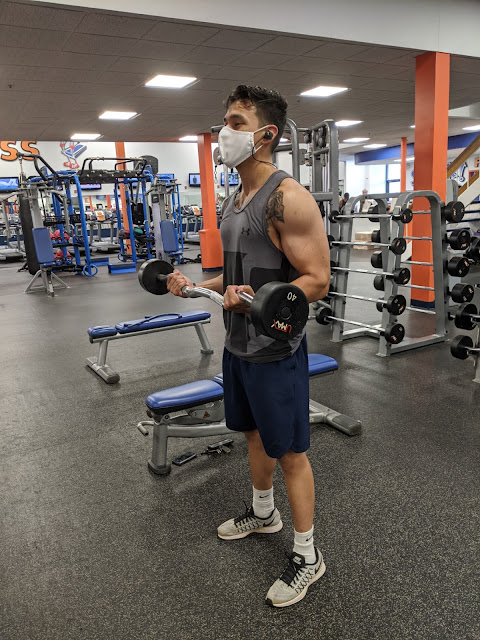High Reps/Light Weights or Low Reps/Heavy Weight: Which Is Better?
Lifting weights is pretty uncomplicated: pick a weight, choose a move, and crank out as many reps as you can. Other than making sure to use proper lifting technique and, if you’re lifting really heavy, grabbing a friend at the fitness center to spot for you, there’s not much to it. No fancy machinery necessary, no formula to figure out -- just you and some iron. But, like most types of exercise, there are plenty of opinions on the ‘best’ way to do it. One of the main areas where opinions differ is in the choice of weight and number of reps. Some swear by using heavy weight and low reps, while others say the fastest way to get ripped is to use lighter weights with more reps. So which is the best, and why?
The simple answer is both! Each has its own purpose, but both types of lifting are beneficial to everyone, at every fitness level. Although there’s enough information on the science of weight lifting strategy to keep you reading for weeks, here’s a basic breakdown of the differences between the two and how they can help you achieve your goals during your weekly fitness gym workouts.
Lighter Weights/Higher Reps
The benefit of lifting lighter weights is that you can complete more repetitions and sets before your muscles fatigue. This trains the body’s type 1 muscle fibers, or slow-twitch fibers, which leads to greater muscular endurance. Bottom line: you’ll be able to lift and hold heavy things for longer periods of time. The perception that using lighter weights won’t create unwanted “bulk” makes this strategy more appealing to women than men, but men benefit from it, as well.
How to do it:
Heavier Weights/Lower Reps
Lifting heavier weights works the body’s type 2 or fast-twitch muscle fibers, which have more power but fatigue faster. Contrary to popular opinion, lifting heavier weights will not make women look bulkier, at least not without serious training and very heavy weights. Instead, lifting heavier weights creates new muscle tissue, which not only increases strength and power, but makes you look leaner since muscle tissue is denser than fat and takes up less space in your body. More muscle tissue also burns more calories, even at rest, increasing your metabolism.
How to do it:
General Advice
You might be wondering how to tell which weight to use for each type of lifting – for instance, how do you determine ’50 percent’ of your capability? A simple suggestion is to (safely) test your limits. Count how many reps you can complete comfortably with a particular weight, while maintaining good form, until you start to fatigue. The last few reps should feel difficult, but not impossible. If you can only complete a handful of reps before you start fatiguing, it’s probably near your maximum. If you could lift it all day without any trouble, it’s a little too light. Choose weights between this range based on whether you want to build muscular endurance or strength, and you’re ready to use both these lifting strategies to maximize your fitness center workouts every time.




Comments
Post a Comment